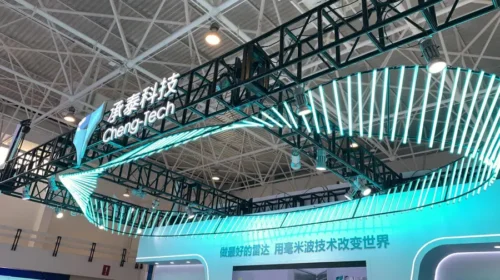Huitongda Network Finds Big Bucks, But Thin Margins, in ‘Sunken Market’

E-commerce company’s shares rose in their Hong Kong trading debut as investors bought into China’s first rural-oriented e-commerce stock
Key takeaways:
- Despite counting Alibaba as its second biggest shareholder, Huitongda’s Hong Kong IPO met with a tepid reception due to concerns about its thin margins
- Company appears overvalued compared with major competitor Pinduoduo, which spends far more on R&D
By Ken Lo
As the e-commerce market in China’s largest cities becomes saturated, many platforms have turned their attention to previously neglected markets in smaller townships and rural areas, sometimes called “the sunken market.” Take industry leader Alibaba (9988.HK, BABA.US) for example, which launched a sub-platform catering to that market with more generous discounts. The platform reported as many as 240 million annual active consumers by the end of last September and a nearly 400% year-on-year rise in orders sold directly from manufacturers to consumers (M2C).
Huitongda Network Co. Ltd (9878.HK), which just completed a Hong Kong IPO, has found its calling catering to the sunken market. Established in 2010, the Alibaba-backed company’s trading and service platforms offer online and offline supply chain solutions, software as a service (SaaS), as well as merchant solutions to retail participants.
The company finished its IPO process last week, with decidedly tepid results. The public portion of the offering was only 67% oversubscribed, and it priced at HK$43, representing the bottom of its range. The company raised HK$2.1 billion ($270 million), most of which will be used to strengthen relationships with existing customers and attract new ones, enhance its supply chain and for new investment in IT infrastructure.
The stock rose by a slight 4.8% to close at HK$45.10 in its trading debut last Friday. But it fell after that and closed Wednesday at HK$43.05, just a tiny fraction above the IPO price. It has aptly been dubbed as “China’s first rural-oriented business digitalization stock.”
Low margins
The lukewarm investor reception probably owes to Huitongda’s business performance. The sunken market’s impressive growth notwithstanding, rural consumers are highly price-sensitive and thus e-commerce companies need better economies of scale in order to maintain stable margins. In Huitongda Network’s case, its revenue grew by 35.1% in the first three quarters of last year to 46.49 billion yuan ($7.3 billion). But its gross revenue was only 1.22 billion yuan, with a piddly gross margin of just 2.6% – much lower than that for giants active in first- and second-tier cities. And the company reported a net loss of 158 million yuan for the nine-month period, though the loss narrowed by nearly 50% year-on-year.
Huitongda’s business model sees it purchase from suppliers, then distribute those goods to its channel partners and member stores using its self-operated website. That part of its business raked in 46.14 billion yuan in the first three quarters of last year, accounting for the vast majority 99.2% of its total revenue. Within that total, consumer electronics, agricultural production equipment and home appliances alone accounted for 80% of total revenue.
The other part of its operation, providing high-tech content services like SaaS+ subscription and merchant solutions, only contributed 278 million yuan, accounting for 0.6% of its revenue during the first three quarters. But that part of the business carried a substantially higher gross margin of 59.6%, even though it’s unlikely to become a major business driver in the short term.
The group’s biggest single stockholder is president and founder Wang Jianguo who holds around 30% of its shares. Alibaba is the second largest with 17.33% of the company’s shares. According to the prospectus, the company has put in place IT infrastructure and a big data platform in its Nanjing headquarters with cloud-data service support from Alibaba’s cloud unit. So far that’s the only business collaboration between the pair.
By the end of last September, Huitongda had more than 160,000 member retail stores, 10,000 suppliers and 20,000 channel customers with business presence in 21 provinces and more than 20,000 towns. It had more than 175,000 stock keeping units (SKUs) and had served over 300 million rural consumers.
A market report cited in the company’s prospectus shows per-capita annual disposable income in the sunken market is expected to grow at a compound annual rate of 7.2% from 29,000 yuan in 2020 to 40,000 yuan in 2025, faster than the 6.3% rate for bigger cities. Driven by this and other factors, the retail market in these underdeveloped parts of China is poised to reach 20.6 trillion yuan by 2025.
With that big potential, it’s understandable why the sunken market has become a hotly contested battlefield among e-commerce platforms in recent years. Within that group, players with an advantage in supply chain integration and warehousing and other logistics capabilities are gaining an upper hand. But companies are also having to increase their R&D investments continuously to optimize digital supply chains and improve the performance and efficiency of their products and services to attract more customers.
Anemic R&D investment
E-commerce giant Pinduoduo (PDD.US) is worth mentioning in any discussion about Huitongda, since the two have similar business models with a focus on the sunken market. Thus a comparison between the two can shed some light on where Huitongda still needs to improve.
Pinduoduo invested a remarkable 2.42 billion yuan in R&D during the third quarter of last year, accounting for around 11.3% of its 21.5 billion yuan in quarterly revenue. Its R&D spending as a share of revenue was also above 10% in the previous two quarters. By comparison, Huitongda’s R&D spending was only 54.93 million yuan in the first three quarters of last year, accounting for a meager 0.12% of its 46.49 billion yuan in total revenue.
Despite losing money, Huitongda Network has stable revenue sources that can also be compared with its larger and better-known rival. Pinduoduo reported an operating profit of 8.28 billion yuan in the first three quarters of last year, and the full-year figure could reach 11.05 billion yuan if growth continues at a similar rate. That translates to a price-to-operating profit ratio of around 40 times.
Given that Huitongda Network’s full-year operating profit is expected to reach around 585 million yuan, its price-to-operating profit ratio is around 58 times, higher than Pinduoduo’s. That means that investors still look relatively favorably on the company, though it will have to justify that view by improving its operating efficiency.
To subscribe to Bamboo Works free weekly newsletter, click here






